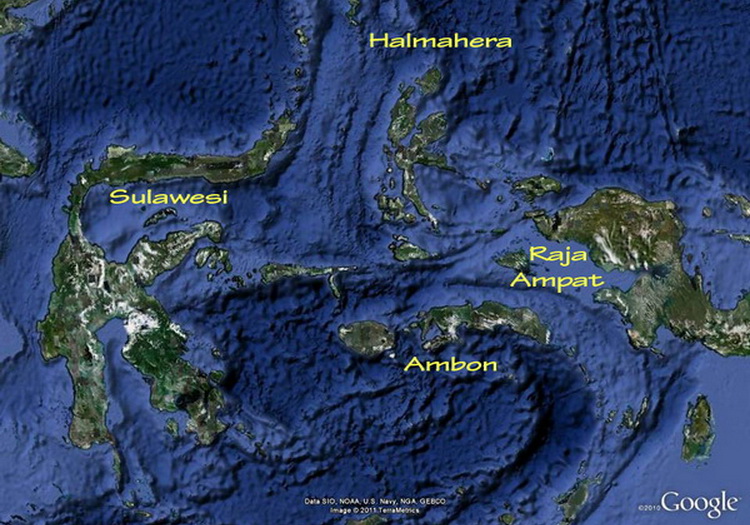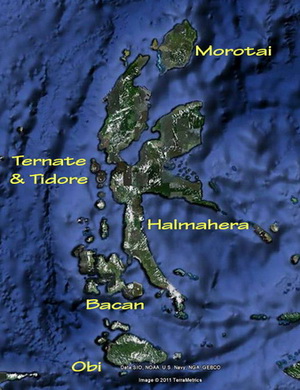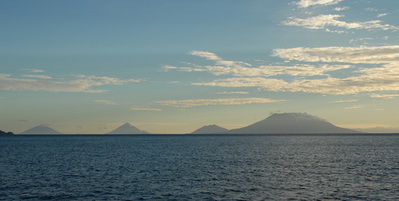The island of Halmahera lies roughly equidistant between the diving hot-spots of North Sulawesi & Raja Ampat, and right in the path of the Indonesian Throughflow as it surges through the archipelago. The strangely shaped island is almost a scaled down, carbon copy of Sulawesi, and is one of the more remote of the 18,000+ islands in Indonesia.

Halmahera is part of the Indonesian province of North Maluku and covers a total area of nearly 25,000 km2, which includes the main island itself and several smaller islands such as Morotai in the north and Bacan & Obi in the south.
Diving Indonesia: Halmahera and the Spice Trade

While Halmahera may be the largest island in the area, it is the tiny volcanic islands of Ternate and Tidore off its western coast that have traditionally dominated the region because of the aromatic spice cloves that grew there – and only there…
It seems strange that in these days of 24 hour convenience stores, where spices such as cloves, mace & nutmeg are now simple commodities, but in the 1600’s they were literally worth their weight in gold.
Spices from the Mollucas had trickled into Europe in small quantities during the middle-ages and gained popularity amongst wealthy people as a way to make poorly preserved meat taste better.
Spices were also perceived to provide a degree of protection against the deadly plagues that regularly ravaged Europe at that time, making them a highly sought after and expensive commodity.
The rise of the Republic of Venice in the 12th century, and its control of the key Mediterranean seaways, allowed it to dominate European trade and completely monopolize the spice trade for the next 300 years.
The Venetians and their Arabic trading partners effectively had a stranglehold on the flow of these precious spices.
But the rise of the Turkish Ottoman Empire and the seizure of Constantinople in 1453 ultimately led to the closure of the land route & the end of this hugely profitable monopoly. It also triggered the “age of exploration” – a two hundred year period when the major powers of Europe sent sailing ships, captained by the likes of Christopher Columbus, Ferdinand Magellan and Vasco Da Gama, to find & control the source of the spices.

The Portuguese were the first to reach the Mollucas and seize control of the spice trade, using the immense profits to finance their plans for a global colonial empire.
But the end of the 16th century the Dutch arrived with bigger and better ships & guns and stronger financial backing and within a year they had established total, but very brutal, control over the area.
Both Ternate and Tidore are Islamic sultanates who have a long history of bitter rivalry that predates the arrival of European explorers, but both the Portuguese and then the Dutch were able to ruthlessly exploit that rivalry to great effect as they sought to control the spice trade.
The success of the British in growing transplanted spices in India and later for the French in Zanzibar dramatically reduced the importance of Ternate, Tidore and the other spice islands and the advent of refrigeration reduced the spices to simple commodities.
